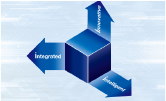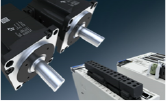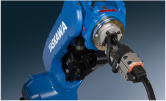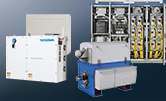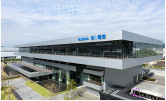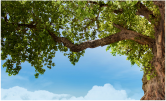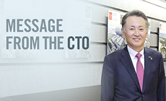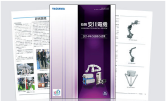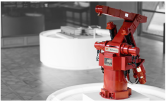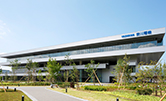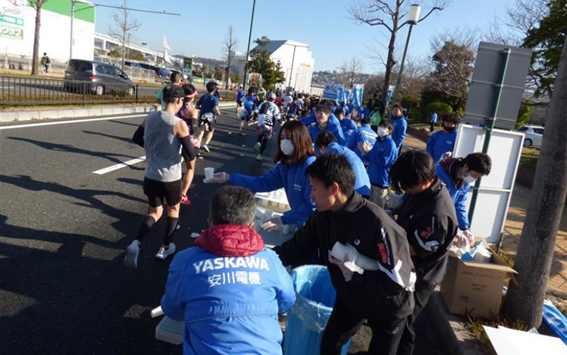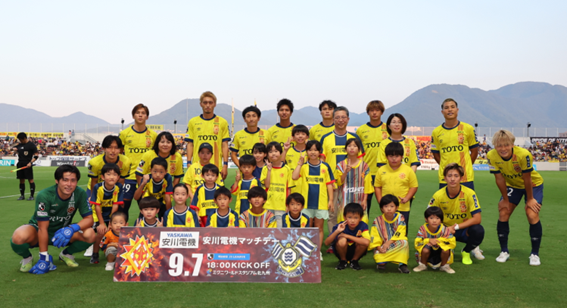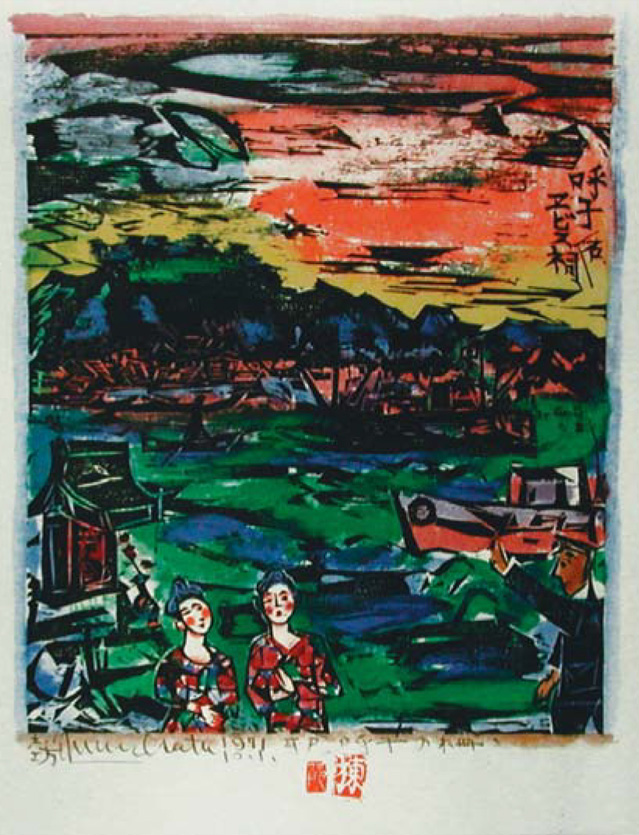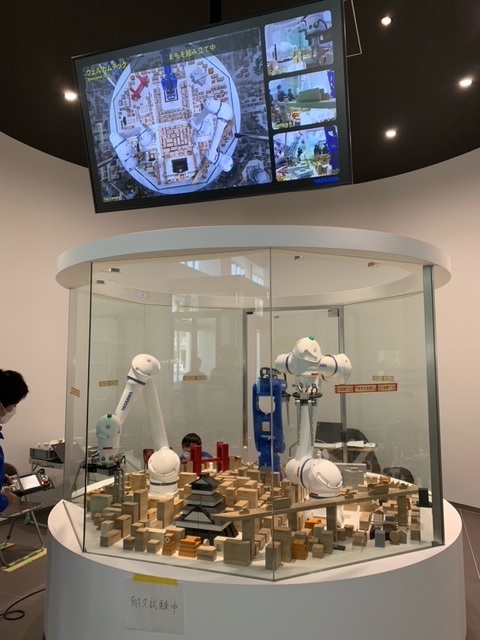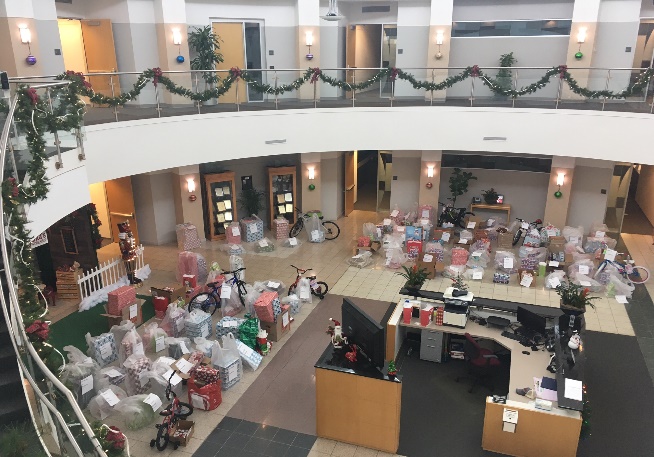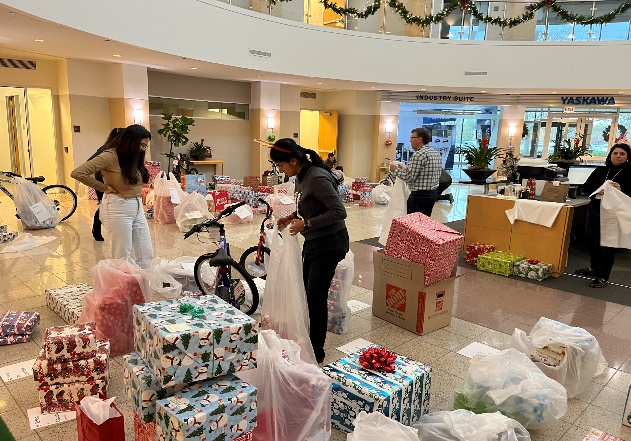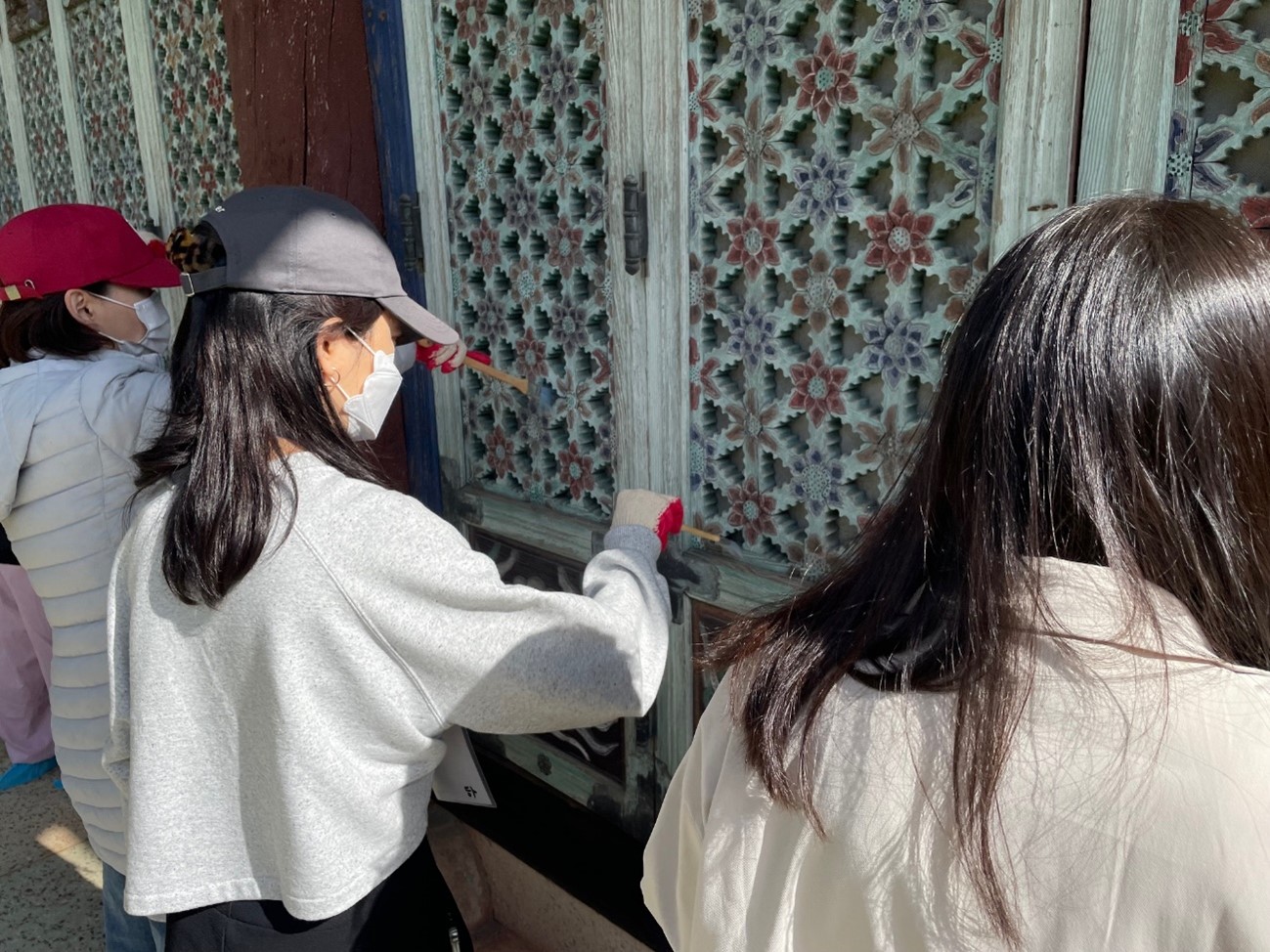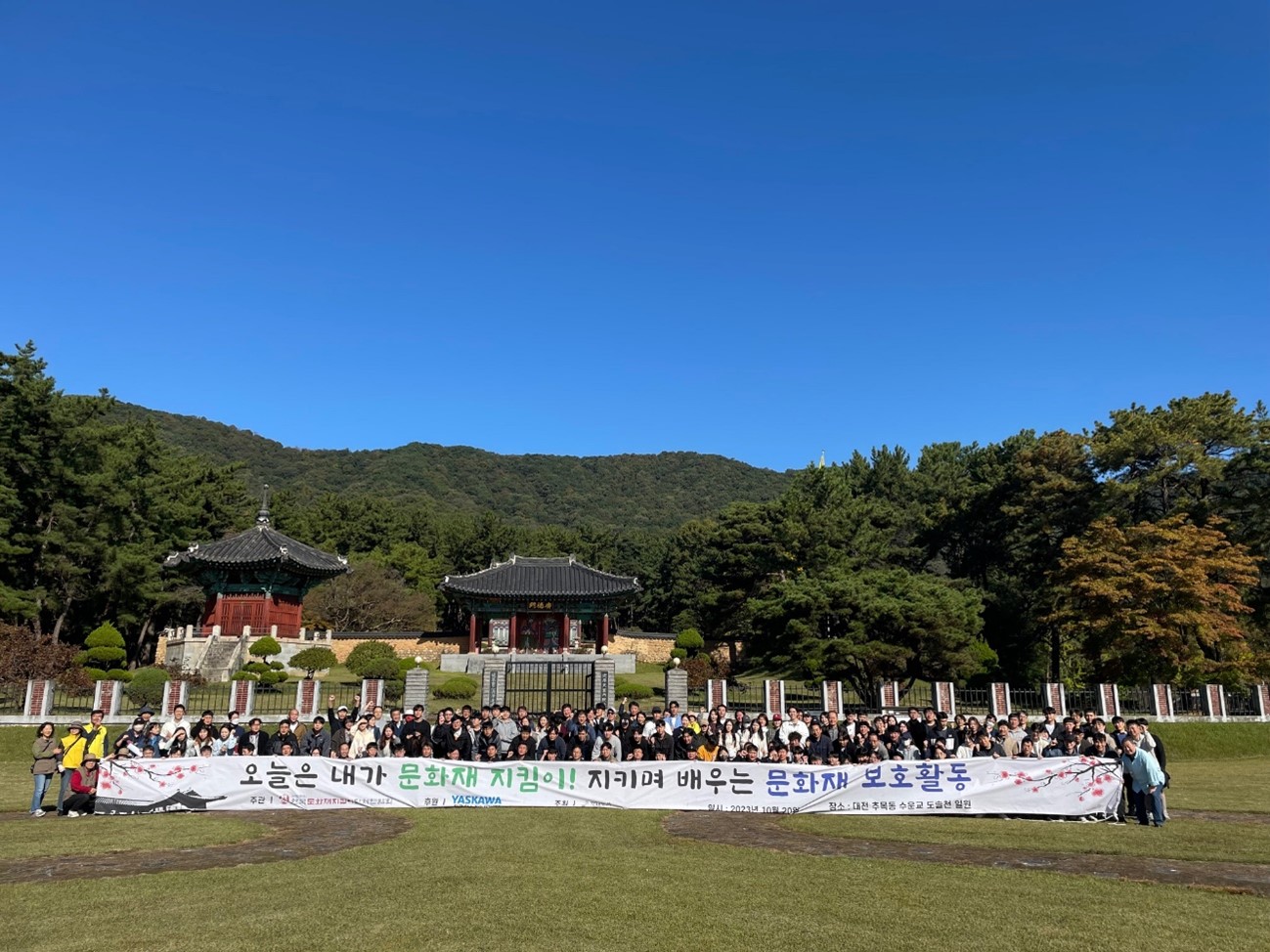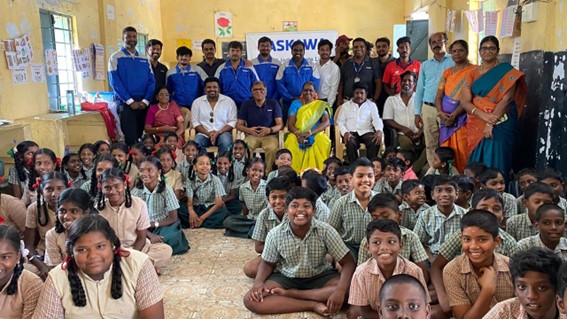Community relations
At our global locations with production and business sites, as well as in the city of Kitakyushu, where Yaskawa is headquartered, we will actively participate in local events, promote sports, and provide a venue for dialogue with domestic and overseas guests and industry-academia-government communications, in an effort to contribute to society and promote co-creation with the local community.
Promotion of Culture and Sports
Volunteers in the Kitakyushu Marathon
Since the first event, Yaskawa has been a main sponsor of this large-scale, citizen-participatory marathon held in Kitakyushu City, where our head office is located. In February 2024, many Yaskawa Group employees and their families volunteered at the Aid Station. We were able to contribute to the excitement of the event by sending smiles and applause to the runners.
Support for “Giravanz Kitakyushu”
“Giravanz Kitakyushu” is a professional soccer club that belongs to the Japan Professional Football League (J.
League), and is headquartered in Kitakyushu City. In 1947, Giravanz’s predecessor, Mitsubishi Kasei Kurosaki
Soccer Club was founded. In 2010, the club became the 5th J-League member in the Kyushu region after Roasso
Kumamoto and the 2nd J-League member in Fukuoka Prefecture after Avispa Fukuoka. Yaskawa is an official sponsor
of Giravanz Kitakyushu.
Master Shiko Munakata and Yaskawa
Master Munakata and “The Yaskawa calendars”
Nishi Kaido Munakata Woodblock Prints Hirato Yobiko no Saku
Yaskawa has been producing calendars displaying the works of Master Munakata since 1958. These calendars were
sent out to customers at home and abroad, and they have always been extremely popular. Although countless
calendars are produced in Japan today, not one of them has been dedicated continually to the works of one artist
for so long.
The Yaskawa calendars are distinguished by extraordinary works of art derived from poetry
penned by the Master himself. Another striking feature is that the true beauty and natural talent found in the
original works were painstakingly reproduced by printing every stunning piece on handmade Japanese paper. Each
piece can be removed from the original mounting, remounted and framed for years of enjoyment long after the
calendar year has gone.
Many brilliant pieces have appeared in the Yaskawa calendars over the years, but
the most notable calendars have to be the Kaido Series that began with the Nishi Kaido Munakata Woodblock Prints
from 1971. These truly original collections were the result of close collaboration between Master Munakata and
Yaskawa both in the planning and in the journey to gather the materials that were used. No one was more
enthusiastic about making the calendars truly great works of art than Master Munakata himself. He wanted others
to draw from life, to enjoy beautiful scenery, and to experience the delicacies of provintial areas. The
calendars make it clear that he wanted others to enjoy the journey as well.
An Encounter between Yaskawa and Master Shiko Munakata
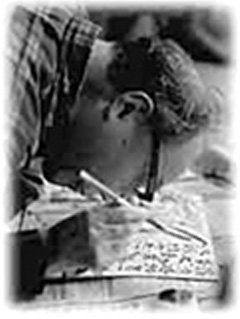
The Master at work
It began in 1951 when the head of advertising’s strong interest in prints created by Master Munakata culminated
in a visit to the Master’s studio in Ogikubo. That first encounter became a lifelong relationship as Yaskawa
commissioned one Munakata piece after another to grace our facilities as well as our promotional magazines. Some
of the Master’s extraordinary pieces eventually evolved into a series of calendars.
Master Munakata was
not a leading woodblock print artist in 1951, and, in fact, he was virtually unknown. However, he exhibited his
piece “Nyonin Kanzeon” at the International Exhibition in Lugano, Switzerland that same year, and became the
first Japanese artist ever to win the coveted top prize there. His print “Shaka Judaideshi” won the Grand Prix
at the Sao Paolo International Art Exhibition in 1955, and a series of subsequent wins brought Master Munakata
international acclaim. This was soon followed by widespread recognition in Japan as well. International fame
never affected our relationship with the Master, and we are honored that he played such an invaluable role in
our corporate history and culture over the years.
-
Nyonin Kanzeon print from Aomukehi no Saku Won first prize at the International Exhibition in Lugano,
Switzerland
-
Shaka Judaideshi selection from Shaributsu no Saku Won the Grand Prix at the Sao Paolo International Art
Exhibition
Community Exchanges
We are working to build a better relationship with the local community by interacting with the people through factory and site tours, social experience programs, and participation in local events.
Activities Utilizing Robot Village
Since Yaskawa opened Robot Village at its head office in Kitakyushu on June 1, 2015 as part of its 100th anniversary project, the YASKAWA Innovation Center, an integral facility at the village, has welcomed more than 190,000 visitors as of May 2024. Embracing our hopes to nurture children who are our future and to express our appreciation to the people of the community who have supported us since our establishment, our guides and every one of our staff members aim to deliver the appeals of Yaskawa to the visitors to deepen their understanding for our company.
We will continue to use Robot Village as a contact point that ties Yaskawa with the community by continuing to
vigorously take part in local events, offer inspection tours to customers from both Japan and abroad, and as an
avenue for communication between industry, government, and academia for our group to co-exist with the
community.
Exhibits at Space LABO
The Space LABO, a science museum in Kitakyushu, features a section devoted to Yaskawa exhibits. Here, three Yaskawa robots work together to assemble Kokura Castle, Wakatoohashi Bridge, JR Mojiko Station, and other famous sites in the city, as well as YASKAWA Innovation Center, using building blocks to create a town.
Former residence of Yasukawa family open to the public
The former residence of Keiichiro Yasukawa, the promotor of Yaskawa, opened to the public on April 1, 2022. Since 2016, Yaskawa has worked with the city government on a project to utilize the former Yasukawa residence, which was designated a tangible cultural property of the city in 2018 and is now being used as a tourist attraction for visitors from outside the city.
Global Social Contribution Activities
United States
IMPACT Corporate Giving Program
Yaskawa established the IMPACT Corporate Giving Program (IMPACT) to support donations and volunteer activities through company-sponsored programs and initiatives.
IMPACT supports local communities through a variety of activities, including participation in a charity event to support people with multiple sclerosis as well as collecting toys for children who do not have presents at Christmas through the local foster care system.
China
Lending demo machines to Chengdu Robot Innovation Center
Yaskawa Electric (China) has established the i3-Mechatronics Center within the Chengdu Robot Innovation Center in order to utilize the industrial concentration, applied innovation, and human resource gathering power of the western region of China, and to develop cooperation with universities, industry associations, and SIers in Sichuan Province.
South Korea
Volunteering to clean up local cultural properties
In addition to supporting Japan-Korea exchange programs and providing financial support to local children and students, Yaskawa Electric Korea provides volunteer activities for local communities. In 2023, all employees took part in cleaning, weeding, and other cleanup activities at tangible cultural properties in the Daejeon area.
India
Yaskawa India focuses on supporting the education of women and children and implements a variety of social contribution activities.
In 2023, donations were made to school infrastructure, including the installation of drinking water facilities and solar power generation systems at schools, the donation of robots and drives products to science labs, and the construction of bus facilities in rural areas.
 Region
Region



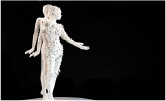 Principles & vision
Principles & vision
 Procurement
Procurement
 Sustainability for the Yaskawa Group
Sustainability for the Yaskawa Group
 Customer satisfaction
Customer satisfaction
 Supply chain
Supply chain
 Social contribution
Social contribution
 Compliance & risk management
Compliance & risk management



